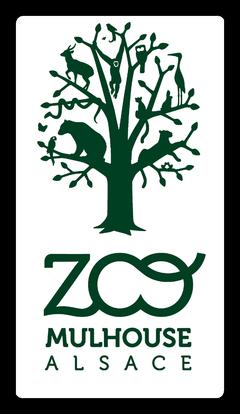| Parc Zoologique et Botanique de Mulhouse | |
|---|---|
 Park logo | |
 | |
| 47°44′04″N7°21′03″E / 47.7345°N 7.3507°E | |
| Date opened | 1868 [1] |
| Location | Mulhouse, Grand Est, France |
| Land area | 25 ha (62 acres) [2] [3] |
| No. of animals | 900 |
| No. of species | 190 |
| Memberships | BGCI, [1] EAZA, [4] WAZA [5] |
| Website | www |
The Mulhouse Zoological and Botanical Park is a French zoological park located in the Grand Est region in the departement of Haut-Rhin, in the southeast of the city of Mulhouse, district of Rebberg. Created in 1868 by philanthropists industrialists, led by Charles Thierry-Mieg son, he was successively the property of the Cercle mulhousien, of the Industrial Society of Mulhouse, and then of the City from 1893. It is now managed by the agglomeration community of Mulhouse region, Mulhouse Alsace Agglomération. Its director is, since 2010, the veterinary Brice Lefaux.
Contents
Located on the edge of the Tannenwald forest, it covers 25 hectares and present more than 900 animals of 170 species, as well as 3,500 plant varieties. Among the major park facilities are the Grand Nord area dedicated to Arctic wildlife (polar bears, muskoxen, arctic foxes...) and an Asian multispecies pen. The park holds the national label "remarkable garden" of the ministry of Culture for its botanical collections: remarkable trees, irises, peonies and rhododendrons gardens.
The zoo, which is a permanent member of the European Association of Zoos and Aquaria (EAZA), is engaged in ex situ conservation by participating in European Endangered Species Programmes (EEP), which it coordinates nine of them (for five species of monkeys, three species of lemurs and one species of wallaby). It also supports in situ conservation associations working in the field and have already reintroduced animals in their natural environment, in France and in Africa. It is also a member of the World Association of Zoos and Aquariums (WAZA) and of Botanic Gardens Conservation International (BGCI).
In 2014, it was the eleventh zoological park of France in terms of frequentation, with 400,000 visitors.
